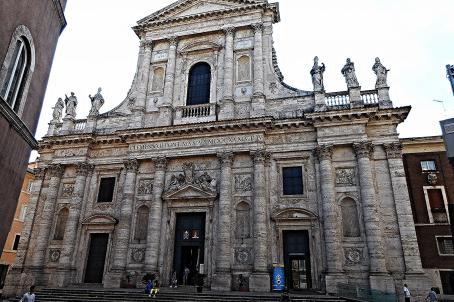Chiesa di Santa Lucia del Gonfalone

The church of Santa Lucia del Gonfalone is the reconstruction, from 1511, of an ancient medieval church. The new building was entrusted to the Arciconfraternita del Gonfalone and underwent successive restorations in 1603, in 1764 by Marco David and in 1866. It was on this last occasion that Francesco Azzurri decorated the interior.





